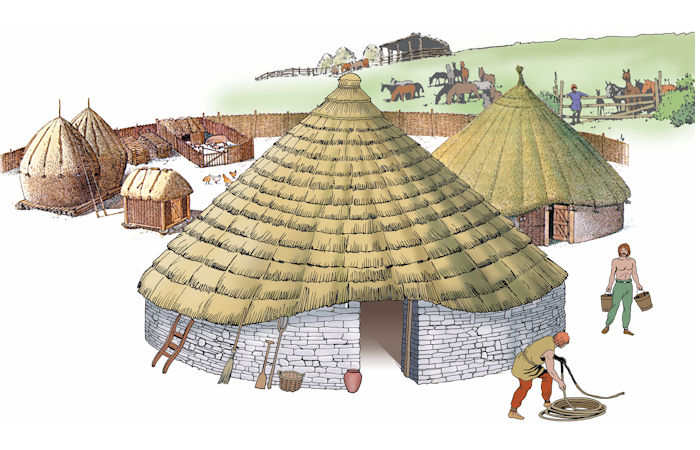Din Lligwy: Prehistoric Celtic Settlement Of Anglesey, Wales
A. Sutherland - AncientPages.com - The prehistoric ruins of the Din Lligwy settlement have a long history spanning three eras.
House foundations at Din Lligwy hut circle, Anglesey, August 2, 2004. Image credit: Velela - CC0 1.0 -Public Domain
It is a fascinating place on the eastern coast of Anglesey, Wales, United Kingdom, which has experienced more than 5000 years of human activity.
The Din Lligwy Ancient Village (also known as the Din Lligwy Hut Group) represents a set of structures, including a Neolithic burial chamber, an Iron Age village, and an old, long-abandoned church. It was built by the native population of Anglesey during the latter part of the Roman occupation of Wales. But the origin of the settlement may well go back to the Iron Age.
Din Lligwy Burial Chamber consists of a circle of eight upright stones of differing shapes, all supporting a massive capstone, 5.9m by 5.2m and 1.1m thick. The enormous capstone weighs approximately 25 tons, while the chamber has a height of about 2 meters. An earthen mound would have covered initially Lligwy. If such a cairn once covered this chambered tomb, no trace remains.
This ancient chamber, dated to c. 3000 BC, was excavated by archaeologists in 1908/9. They discovered the bones of men, women, and children, animal bones, flint implements, shells, pottery, and a bone pin.
Lligwy Burial Chamber. Image credit: Kate Heath - Flickr - CC BY 2.0
It is worth noting that even earlier (1905-07), excavations revealed hundreds of Roman potsherds dated back to the 3rd and 4th centuries AD, many repaired with iron clamps, pottery, and coins.
People focused on ironworking, smithing, and probably smelting, supported by smelting hearths and iron slag in some of the building remains. The settlement includes a series of well-preserved stone huts within a stone-walled enclosure.
Two rectangular huts contained six smelting hearths. One well-preserved Din Lligwy hut circle - probably dated from the 2nd to the 4th centuries AD – was occupied up to the Romano-British time.
Credit: Adobe Stock - Massimo Todaro
Two different settlements once existed in the area. The grooved ware dates to the Neolithic period and represents the British Neolithic pottery style.
Another one is beaker ware from the early Bronze Age. However, the presence of grooved ware and beaker pottery would suggest that this tomb was used during the Neolithic and later, during the early Bronze Age.
At first, Iron Age Britons probably lived in the area. Excavations on the site revealed that the round structures were likely houses, and the rectangular ones were barns or workshops. Later, these people were influenced mainly by the lifestyle of the invading Romans. The settlement is one of several that existed in the Lligwy Valley.
It is believed that two rectangular huts contained six smelting hearths. At first, Iron Age Britons probably lived in roundhouses; later, these people were influenced mainly by the lifestyle of the invading Romans. The settlement is one of several in the Lligwy Valley.
Times when the Vikings invaded North Wales were troublesome.
Historical records show that a series of terrifying attacks by Viking invaders on the coasts of Britain, France, and Ireland occurred in the last decade of the 8th century.
However, archaeological evidence shows these invaders may not have been as devastating as records claim.
The first recorded raid on Wales occurred in 852, and later, further attacks by Vikings on Anglesey and Gwynedd from 854 onwards. Rhodri Mawr, the ruler of Gwynedd (844-78), led resistance to these early destructive attacks, killing the Danish leader Gorm in 855.
Rhodri Mawr, King of Wales/King of the Britons. Credit: Public Domain
In the meantime, Vikings - after being driven out of Dublin - came to Anglesey in 903. Irish and Welsh records said they failed to establish in Wales, so they decided to sail to Chester. But again, in 918, Anglesey was ravaged by Vikings.
Frequent attacks occurred on the island during the second half of the 10th century; Olaf of Dublin built a castle known as 'Olaf's Castle' or 'Castell Bon y Dom' in the year 1000.
This one-sided historical record of Vikings terrorizing the land has now been transformed by archaeology. Viking contact was sometimes hostile and brutal; however, in some areas, the Vikings rapidly settled as peaceful farmers. Archaeological excavations have provided evidence of these people as colonizers, skilled craftsmen, and merchants.
The nature of Viking settlement in Wales remains one of the mysteries of early medieval archaeology, none more so than on Anglesey. Vikings are firmly and undoubtedly historically associated with the Isle of Man, Dublin, Chester, and the Wirral. Geographically, these places are also linked with the waters of Anglesey. Therefore, the activities in this area left their mark on Anglesey's history.
Written by – A. Sutherland AncientPages.com Senior Staff Writer
Updated on Mar 1, 2024
Copyright © AncientPages.com All rights reserved. This material may not be published, broadcast, rewritten or redistributed in whole or part without the express written permission of AncientPages.com
Expand for referencesReferences:
More From Ancient Pages
-
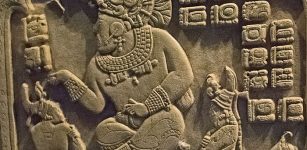 Fall Of The Ancient Maya Civilization Not Caused By Climate Change And Environmental Degradation – Scientists Say
Archaeology | Nov 18, 2021
Fall Of The Ancient Maya Civilization Not Caused By Climate Change And Environmental Degradation – Scientists Say
Archaeology | Nov 18, 2021 -
 Millennium Old Dice Found In Vadnagar, Gujarat, India
Archaeology | Apr 25, 2022
Millennium Old Dice Found In Vadnagar, Gujarat, India
Archaeology | Apr 25, 2022 -
 Psychedelic Blue Lotus Of Egypt – A Misunderstood Ancient Mystery?
Archaeoastronomy | Mar 19, 2025
Psychedelic Blue Lotus Of Egypt – A Misunderstood Ancient Mystery?
Archaeoastronomy | Mar 19, 2025 -
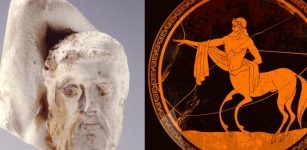 Why Is This Centaur Head A Scientific Mystery?
Archaeology | Jan 19, 2024
Why Is This Centaur Head A Scientific Mystery?
Archaeology | Jan 19, 2024 -
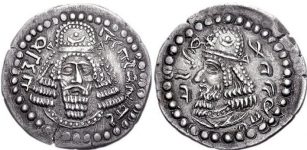 The Rise And Fall Of The Sasanian Empire
Civilizations | Jun 19, 2019
The Rise And Fall Of The Sasanian Empire
Civilizations | Jun 19, 2019 -
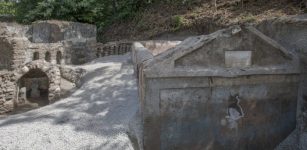 Unusual And Well-Preserved Skeleton Discovered In Ancient Pompeii Sheds New Light On The Cultural Life Of The City
Archaeology | Aug 18, 2021
Unusual And Well-Preserved Skeleton Discovered In Ancient Pompeii Sheds New Light On The Cultural Life Of The City
Archaeology | Aug 18, 2021 -
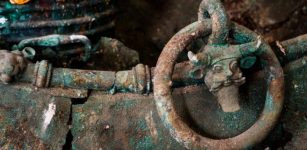 Mystery Of The Lavau Celtic Prince And The Beautiful Ancient Artifacts Hidden In His 2,500-Year-Old Tomb
Archaeology | Jun 5, 2017
Mystery Of The Lavau Celtic Prince And The Beautiful Ancient Artifacts Hidden In His 2,500-Year-Old Tomb
Archaeology | Jun 5, 2017 -
 Mystery Of The Scientist Who ‘Saw’ A Fire From Miles Away
Featured Stories | Nov 1, 2020
Mystery Of The Scientist Who ‘Saw’ A Fire From Miles Away
Featured Stories | Nov 1, 2020 -
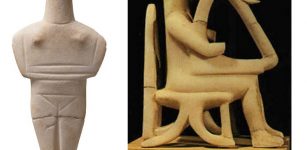 Cycladic Figurines Of Ancient Crete – International Symposium With Scholars From Around The World
News | Sep 25, 2015
Cycladic Figurines Of Ancient Crete – International Symposium With Scholars From Around The World
News | Sep 25, 2015 -
 Ancient Mystery Of America’s Missing Metal – Can The Answer Be Found In Ancient Europe?
Ancient Mysteries | May 18, 2018
Ancient Mystery Of America’s Missing Metal – Can The Answer Be Found In Ancient Europe?
Ancient Mysteries | May 18, 2018 -
 Fragments Of Oldest Pharaonic Military Fortress Unearthed In Egypt’s North Sinai
Archaeology | May 20, 2019
Fragments Of Oldest Pharaonic Military Fortress Unearthed In Egypt’s North Sinai
Archaeology | May 20, 2019 -
 Paleontologists Find New Predatory Dinosaur With Unique ‘Eyebrow’
Paleontology | Aug 29, 2024
Paleontologists Find New Predatory Dinosaur With Unique ‘Eyebrow’
Paleontology | Aug 29, 2024 -
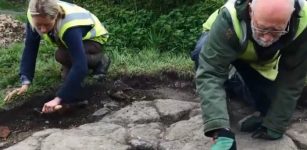 Uncovering 16th Century Scottish Royal Dockyards Used By King James IV’s Navy
Archaeology | May 24, 2018
Uncovering 16th Century Scottish Royal Dockyards Used By King James IV’s Navy
Archaeology | May 24, 2018 -
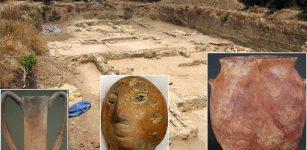 Legendary Helike – Uncovering Lost City of Poseidon
Civilizations | Dec 19, 2018
Legendary Helike – Uncovering Lost City of Poseidon
Civilizations | Dec 19, 2018 -
 Study Reveals Average Age That Women And Men Had Children Over Past 250,000 Years
DNA | Jan 10, 2023
Study Reveals Average Age That Women And Men Had Children Over Past 250,000 Years
DNA | Jan 10, 2023 -
 Remarkable Kailashanatha Temple And Unique Passage Of Life Cycle Including Aging, Death And Rebirth
Civilizations | Mar 26, 2017
Remarkable Kailashanatha Temple And Unique Passage Of Life Cycle Including Aging, Death And Rebirth
Civilizations | Mar 26, 2017 -
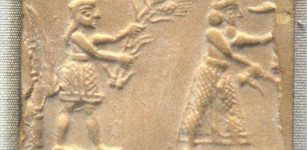 Who Was The Sumerian Ensi?
Featured Stories | Jan 24, 2020
Who Was The Sumerian Ensi?
Featured Stories | Jan 24, 2020 -
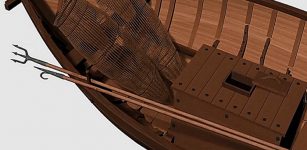 3-D Reconstructions Of Three Wooden Boats Found At Ancient Port In Italy
Archaeology | Jun 23, 2020
3-D Reconstructions Of Three Wooden Boats Found At Ancient Port In Italy
Archaeology | Jun 23, 2020 -
 Native Americans And European Legends Tell Peculiar Beings From The Sky Still Live On The Earth
Ancient Mysteries | May 16, 2018
Native Americans And European Legends Tell Peculiar Beings From The Sky Still Live On The Earth
Ancient Mysteries | May 16, 2018 -
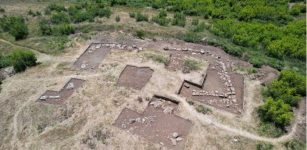 2,000-Year-Old Lost City Of Bassania Described By Roman Historian Livy Investigated By Archaeologists
Archaeology | Jun 21, 2022
2,000-Year-Old Lost City Of Bassania Described By Roman Historian Livy Investigated By Archaeologists
Archaeology | Jun 21, 2022



